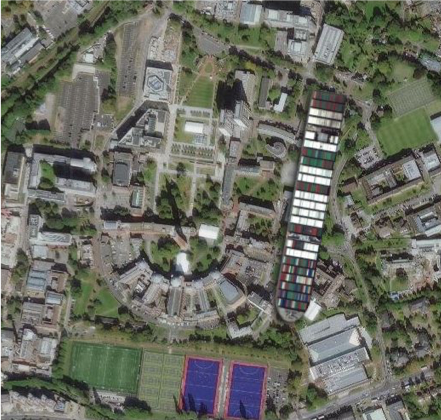In the last weeks, the Suez Canal went from being the most transited waterway on Earth to becoming the largest meme generator on cyberspace. The blockage to maritime traffic had an economic impact estimated in $400M per hour and brought to the headlines one of the most impactful works of Civil Engineering in history.
The Suez Canal was built between 1859 and 1869 to connect the Mediterranean Sea and the Red Sea. It has a length of 193 km and it was crossed by an average of 51.5 ships per day in 2020, around 12% of all global trade. This less than 200 km waterway saves approximately 9,000 km of navigation circumventing Africa for ships travelling between Europe and the Indian Sea. The importance of this waterway is demonstrated by the role it played in relevant diplomatic and military conflicts of the past century, including the Suez Crisis and the Six Days War that kept the Canal closed for eight years. Currently, the Suez Canal is managed by the Suez Canal Authority, owned by the Egyptian Government.
Most of the public faced the news of a container ship being stuck in the Canal with incredulity. However this is not the first time boats get stuck in the Suez Canal. In 2004, an oil tanker blocked the waterway for three days and in 2006 and 2017 cargo ships drifted and stopped the traffic for hours.
It might seem odd that blockages have become more common in the last 20 years, but this is less surprising if we consider the increasing size of vessels. Boats cannot correct their trajectories instantaneously because they are always drifting over a fluid layer. Mastering the drift on large vessels is difficult. There is very little margin for error and, if something goes wrong, moving these giants is not an easy task. This is why large ships across the Panama Canal are pushed by eight electric railway engines called ‘mules’.
The Ever Given is indeed a giant of the seas. Its 400 m long structure has been compared to the size of the Empire State Building; in the figure we can see its relative size in comparison with the University of Birmingham’s Edgbaston campus. Its length equals a full walk from the North Gate at Pritchard’s Road passed the Green Heart and Old Joe, all the way up to the sport pitches.
Suez Canal increased its cross section over the years. Just to provide an idea of the evolution, the Ever Given is 59 m wide, which is 23 m more than the Canal’s bed width in 1956. Nowadays the Canal is 121 m wide at the bottom, with a depth of 24 m and 4:1 sandy slopes on the sides. This means that there is sufficient space for the Ever Given, but any deflection can rapidly end up with the bow in the sand. As it happened.
Size explains why correcting the trajectory of the Ever Given is difficult, but how did the container loose its way in the first place? Have you ever walked along Birmingham canals to find narrowboats stuck across the channel after a very windy night? The winds on the day of the Ever Given accident peaked at 30 mph in that area. The total force exerted by the wind is exacerbated by the imposing lateral area of the container, which is not at all aerodynamic due to the Lego-like accumulation of prismatic containers.
The shallowness of the Suez Canal is the last element in the mix. We know that boats float because they are lighter than water, as counterintuitive as this can be. The weight of the volume of water they displace is equivalent to the lift the boat experiences. In open seas, the displacement of water is negligible due to the vastness of the ocean. That is not the case in Suez. There are only 8 meters between the bottom of the ship and the Canal’s bed. When water is confined in relatively small spaces at the bottom and sides of the ship, it is forced to accelerate due to continuity of mass. This acceleration decreases the pressure, triggering a strange albeit well-documented vacuum effect in shallow waters. The problem is that this effect is not constant along the boat, being stronger at the stern. The result is that the stern of the boat is attracted towards the bank and the bottom, while the bow is pushed up and away of the stern. In other words…the ship tends to rotate.
In summary, there are many elements conspiring to make a giant ship in a relatively narrow and shallow channel under heavy wind deflect from the straight path. Luckily, the Ever Given has been refloated by now but to a great expense. Because we are constantly pushing the limits in terms of the size, speed and capacity of maritime transportation, it is more important than ever to be able to understand and predict rapidly and accurately how fluids will respond to that to minimise this type of events. Because if the last year has taught is anything, is that the laws of nature still apply.